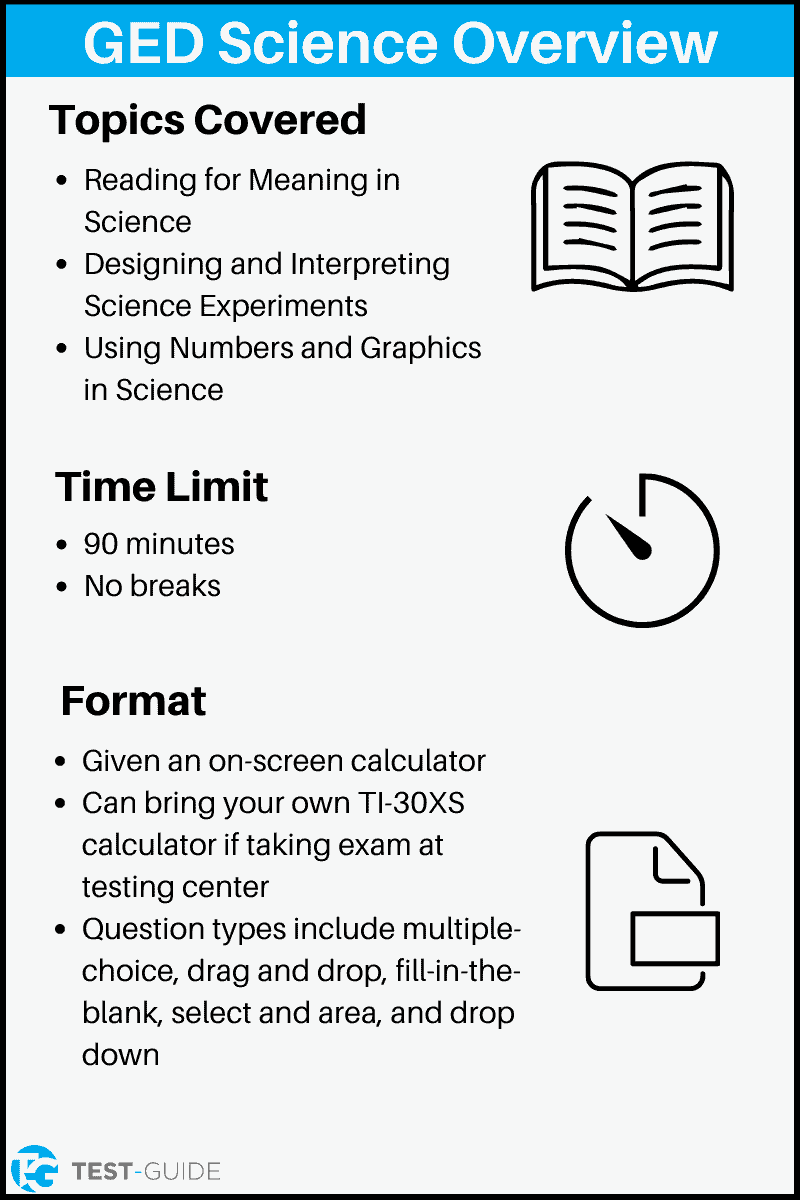All GED Science Practice Tests
Use our GED science practice test below. You will find a diagnostic exam that will tell you if you are prepared for your exam or not.
Use the answer explanations at the end of each exam to learn key concepts.
If you want to focus on other subjects, visit our free GED practice test home.
GED Science Overview
The science portion of the GED exam includes 3 main topics. Some things you need to know for the GED science test include:
- Reading for Meaning in Science (30%)
- Designing and Interpreting Science Experiments (40%)
- Using Numbers and Graphics in Science (30%)
This portion of the exam consists of 90 minutes and there are no breaks given. You will find multiple-choice, fill-in-the-blank, drag and drop, select an area, and drop-down questions.
You will be permitted to use a calculator on this section. You will be given access to an onscreen calculator or you can bring your own TI-30XS calculator if you will be taking the exam in-person at a testing center.
To practice other subjects, visit our GED practice test home. Here is an official link for more information on the GED science exam.
Frequently Asked Questions
How many questions are on the GED science test?
The number of questions varies depending on which exam you get and the state you are in. However, you can expect between 34 and 40 questions typically.
How long is the GED science section?
The science portion of the GED is 90 minutes long. You will not be given any breaks in this section.
What is a passing score for GED science?
You will need to score a 145 or higher to pass this section. Read more about GED scores to learn more about the process and how scoring works.
What kind of questions are given on the GED science test?
You will be asked questions that cover 3 broad topics. Those 3 topics are reading for meaning in science, designing and interpreting science experiments, and using numbers and graphics in science.
The questions will be multiple-choice, fill-in-the-blank, drag and drop, select an area, and drop-down.


